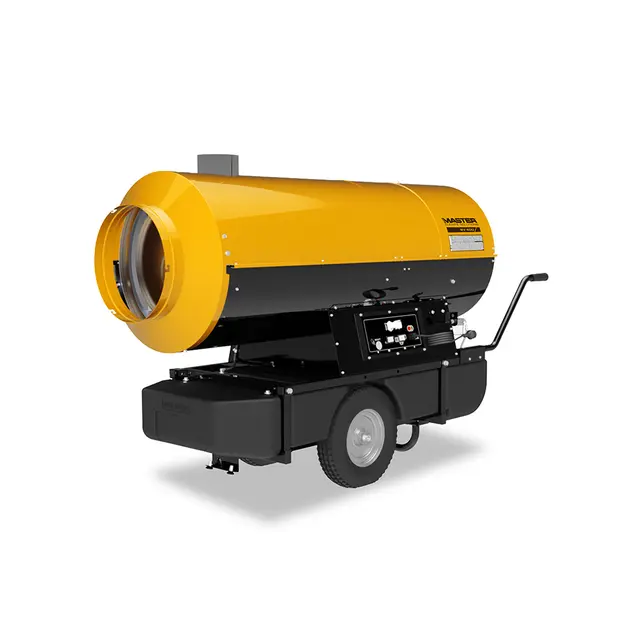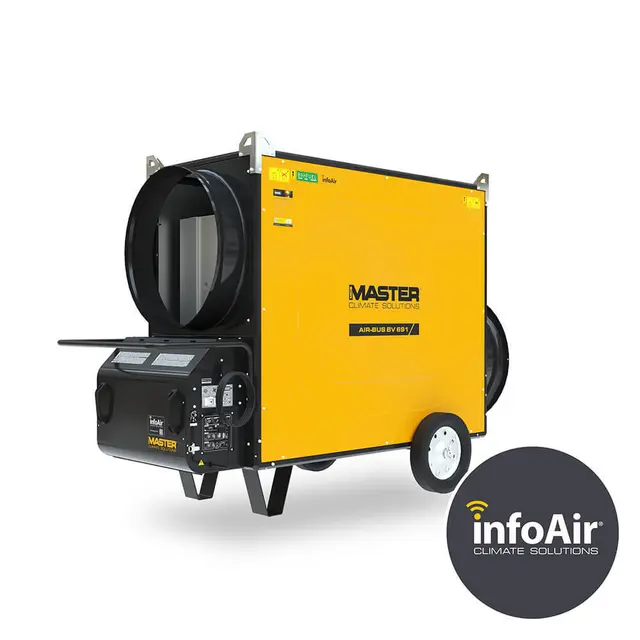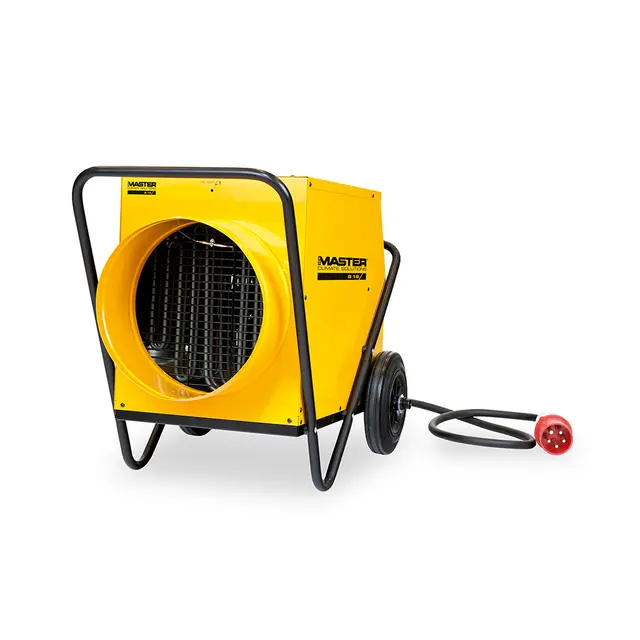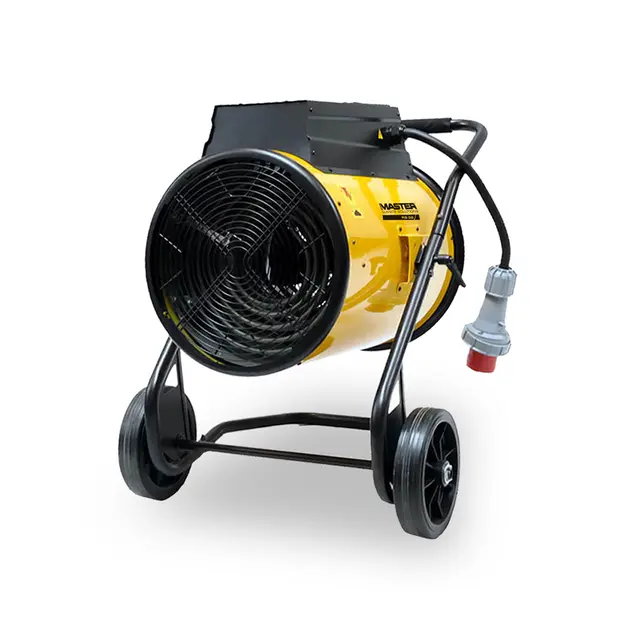The role of portable heaters in water damage restoration

- Home
- Insights
- Heating insights
- The role of portable heaters in water damage restoration
Freezing conditions and heavy downpours can cause flooding chaos in the winter. Homes are left without power. Central heating systems fail. Pipes burst. Properties are left saturated and at-risk of secondary damage. This article aims to share all the ways that heat can help to reverse this damage, alongside other powerful drying methods…
Water damage restoration is an industry-led by know-how. How contractors respond to flooding disasters, and the strategies they put in place to secure a property’s structural integrity and reverse the damage caused by water, directly impact those affected by these unfortunate events.
While fans and dehumidifiers have long been key tools in the equipment arsenal of contractors, heaters can often be overlooked. There are many reasons for this, including the perception that it’s less cost-efficient than other methods.
Heat alone isn’t going to solve flooding issues, but alongside fans and dehumidification, it can help to speed up the drying process significantly. Controlled heating can ensure that only wet materials are exposed to heat and that the air itself in the rooms isn’t heated further than necessary, helping to reduce the amount of electricity used.
Using portable heaters is going to cost more initially, but as it significantly speeds up the drying process, you are condensing the spend to fewer days, and for many, the savings made on not needing to cover extended stays in alternative accommodation and hotels outweighs the cost of portable heaters.
Which heater is most suitable for each property?
As commercial pressure on contractors increases to get things done more quickly, many have started to embrace heat as a method of speeding up the drying process. However, it’s important that the correct heater and the amount of heaters obtained is right for the application.
This all depends on the size of the area that’s been damaged, the type of property it is, the level of power supply and more. These calculations and decisions are what we specialise in, and our wide range of Master portable heaters can accommodate.




If the power supply is limited (such as a plug only allowing for portable heaters less than 3kW), we are more likely to explore an indirect-fired diesel heater.
What makes an indirect-fired heater so powerful?
Indirect-fired heaters are highly efficient devices that provide a large volume of clean, dry and fume-free warm air. They are best for places with limited ventilation like shops, marquees, food preparation areas or exhibition halls. You would no doubt have stepped into a room or structure that was being heated by one of these heaters at some time in your life.
Indirect heaters typically use kerosene or red diesel as a fuel source, whilst also requiring a small amount of electrical power to control the fan and the onboard electronics (where applicable).
Master launched a range of biofuel heaters in 2022, which offer even greater environmental benefits for users looking to improve the efficiency of their water damage projects.
Our Master brand heaters range from 21kW, similar to a typical domestic gas central heating boiler, up to 225kW, which is enough to heat a large commercial or industrial unit.
To put this heating power into perspective, 21kW is 91 amps and 225kW is closer to 1000 amps if you were using an electric heater equivalent.
In many cases, you are lucky if you can find 30-40A of free capacity on a domestic circuit breaker, and drying a total loss can be incredibly challenging during the colder winter months.
How can you utilise an indirect-fired heater to dry a building in the middle of winter?
This is actually a very simple process, and the biggest obstacle is overcoming the fear of the unknown.
Let’s imagine a typical 3-bedroom detached property has suffered a header tank burst, and you are faced with a total loss, and no central heating system to support your drying. You can load up the building with portable heaters and conventional dryers, or you can take a different approach and install an indirect-fired heater.
In winter, the outside air is typically very dry, normally somewhere between 2GPK and 8GPK – this is because the colder air has less capacity to hold water so even if the %RH appears high, the air is still what would be considered desiccated and perfect for drying.
But it’s just too cold to start with. A quick look at a psychrometric chart will show that 5ºC and 80%RH is not wet air, it’s around 4GPK.
An indirect-fired heater uses this source of clean, dry air and introduces heat into it before expelling it into the house or even something larger, like a leisure centre swimming pool!
We recently supported a project run by Rainbow International South Wales & Bristol where we installed a Master BV 500CR heater inside the pool area to dry three separate swimming pools and the walkways around them.
It was a huge undertaking and possibly the largest tenting job Wales has ever seen, but the results spoke for themselves. The entire area was dried using only a handful of air movers and the indirect-fired heater.
What are the advantages of using this type of solution instead of a desiccant trailer?
The first one is cost – an indirect heater is a much smaller capital investment than a desiccant trailer, with the Master BV 500CR retailing at around £6,000 in comparison to £60,000 for a trailer.
Then you have the installation costs, with most trailer set-ups requiring the installation of a 3-phase power supply which in itself can cost around £1,000 each time. The indirect heater on the other hand runs on a standard 3-pin 13A plug.
Finally, the performance of the indirect heater surpasses that of the trailer due to the amount of energy it is delivering to the drying chamber. The BV 500CR produces 5400m3/hr of airflow (25% more than a commonly used trailer) and produces 150kW of usable heat compared with the 12kW produced by your normal trailer solution.
Can a heater alone dry a property?
While a heater will cause the moisture to evaporate at a much higher rate than other methods alone, this moisture will need to go somewhere - as it condenses into the air a dehumidifier is required to ensure the excess moisture is captured and removed.
Discover the Master difference
Next time you are faced with a challenging commercial drying job, or a severe domestic claim in the colder, darker days of the winter, why not give heating some consideration as an alternative drying approach?
Our team can provide technical support, a 3-year warranty and a range of robust drying solutions designed specifically for industrial and residential applications. From initial scoping of required products through to remote monitoring system implementation - we can help you scale up your drying through the power of heat.
To find out more and speak to one of our team, get in touch using the form below.
Related products
Featured insights

Why heat sources are crucial in the aftermath of natural disasters

Discover the different methods to dehumidify building sites quickly and cost effectively

The quick guide to drying out buildings
Need help with choosing the right solution? Our team of over 100 climate control experts can assist.
You can also reach out or join the discussion on our Social Media. Check out our LinkedIn page.











